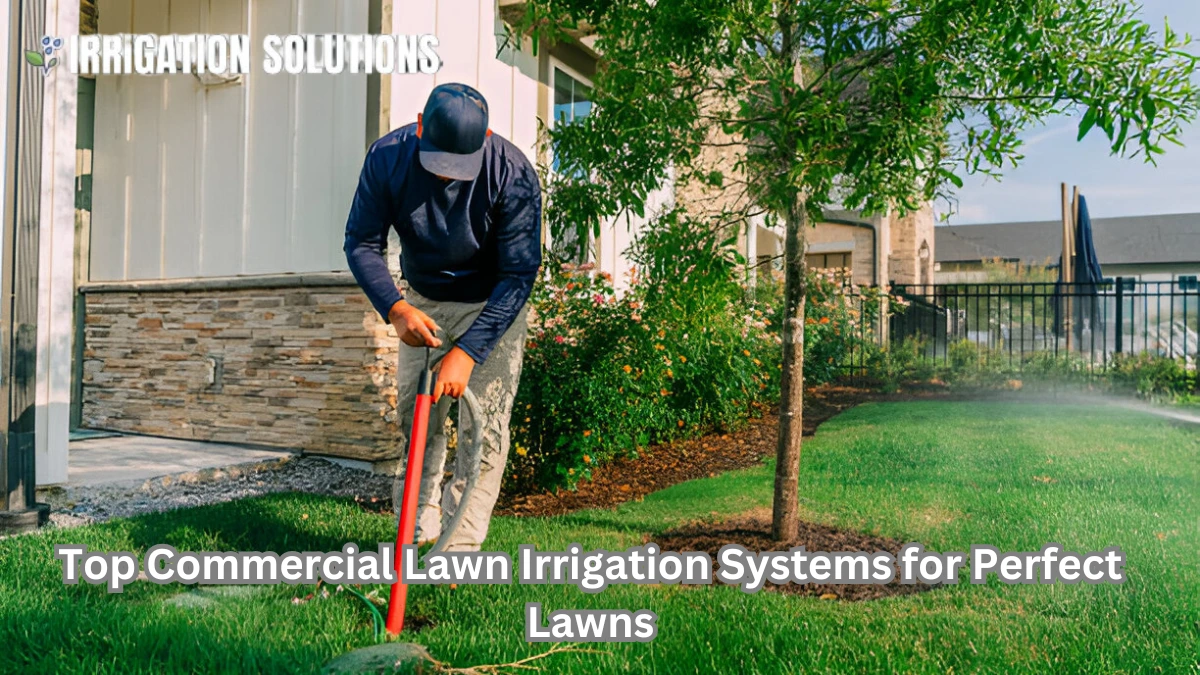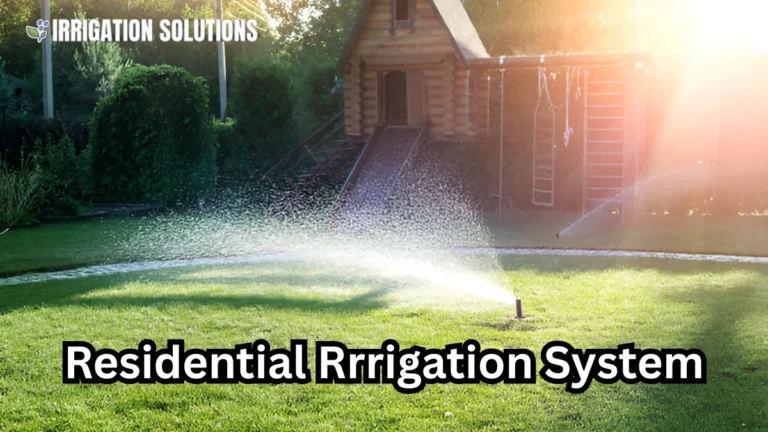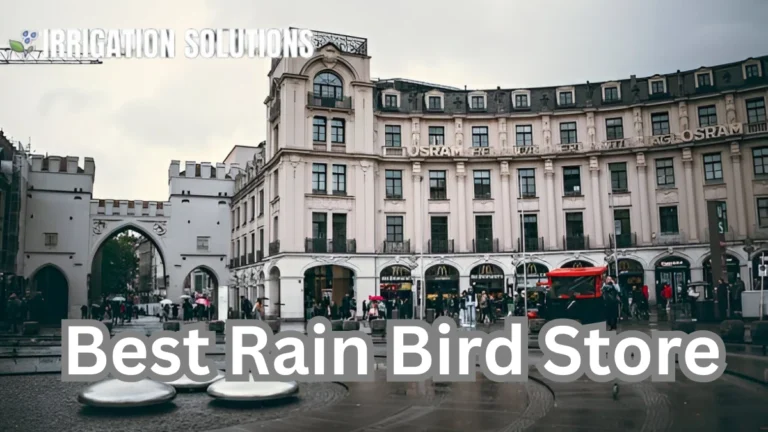“Top Commercial Lawn Irrigation Systems for Perfect Lawns”

A lush, green lawn is not just a treat for the eyes; it’s a hallmark of a professionally maintained commercial property. Whether you’re managing a corporate campus, a golf course, or a park, efficient commercial lawn irrigation is key to achieving that verdant landscape. In this guide, we’ll dive deep into the world of commercial irrigation systems, covering everything from how they work to their benefits, types, and maintenance strategies.
What Is Commercial Lawn Irrigation?
Commercial lawn irrigation refers to systems designed to water large scale lawns, landscapes, or green spaces efficiently and uniformly. Unlike residential systems, these are engineered to handle extensive areas, requiring more robust infrastructure and advanced features to manage water usage effectively.
Benefits of Commercial Lawn Irrigation Systems
A commercial irrigation system offers numerous advantages beyond simply watering grass. Here’s why they are a smart investment:
Water Efficiency
Modern irrigation systems use smart sensors and timers to optimize water distribution, reducing waste. According to the EPA, upgrading to a smart irrigation system can save up to 15,000 gallons of water annually.
Cost Effectiveness
While the initial setup can be costly, the long term savings in water bills and reduced landscaping maintenance make these systems highly cost effective.
Healthier Landscapes
Consistent and even watering ensures grass, shrubs, and plants receive the moisture they need, promoting healthier growth and minimizing brown patches.
Types of Commercial Lawn Irrigation Systems
Choosing the right irrigation system depends on your lawn’s size, the climate, and specific landscaping needs. Below are the most popular types:
Sprinkler Systems
Sprinklers are versatile and can cover large areas. They’re ideal for commercial properties like office parks or sports fields.
- Rotary Sprinklers: Suitable for wide areas, they rotate to distribute water evenly.
- Fixed Sprinklers: Best for smaller sections that need targeted watering.
Drip Irrigation
Drip systems deliver water directly to the plant roots, minimizing evaporation and water wastage. Perfect for landscapes with shrubs, flower beds, or trees.
Central Control Systems
These advanced setups are controlled remotely via apps or software. They integrate weather data to adjust watering schedules automatically.
Subsurface Irrigation
Pipes buried beneath the soil deliver water directly to the roots. These systems are highly efficient and prevent surface runoff.
Key Components of a Commercial Irrigation System
Water Source
This can include municipal water, wells, or rainwater harvesting systems. The choice impacts long-term costs and sustainability.
Pipes and Valves
High quality pipes ensure water flows smoothly, while valves regulate the system to prevent leaks or overwatering.
Controllers and Sensors
Modern systems use smart controllers and soil moisture sensors to automate watering schedules based on environmental conditions.
Sprinkler Heads
These are tailored to specific needs, from wide area rotary heads to micro sprinklers for smaller spaces.
Designing an Effective Irrigation System
An efficient irrigation system starts with proper design. Here are some crucial steps:
- Site Analysis: Assess the lawn’s size, shape, soil type, and sun exposure.
- Zoning: Divide the area into zones based on plant types and water requirements.
- Hydraulics Calculation: Ensure the system can handle the water pressure and flow rate.
- Sprinkler Placement: Overlap sprinklers slightly to avoid dry spots.
Maintenance Tips for Longevity
Regular maintenance is vital to keep the system efficient and functional. Follow these tips:
- Check for Leaks: Inspect pipes and valves periodically to prevent water loss.
- Clean Sprinkler Heads: Remove debris to maintain optimal water flow.
- Adjust Timers Seasonally: Reduce watering in cooler months to avoid overwatering.
- Winterize the System: In colder climates, drain the system to prevent freezing damage.
Case Study: Smart Irrigation in Action
ABC Business Park, located in Texas, implemented a smart irrigation system that reduced water consumption by 30% within six months. By integrating weather based controllers and subsurface irrigation, the park saved $12,000 annually on water bills while maintaining its pristine landscaping.
Common Mistakes to Avoid
- Overwatering: Leads to root rot and wasted water.
- Ignoring Soil Type: Different soils absorb water at different rates.
- Poor Zoning: Mixing high water need plants with drought resistant ones causes inefficiency.
- Skipping Maintenance: Neglecting regular upkeep results in system failures and higher costs.
Table: Comparing Irrigation System Costs
| Irrigation Type | Initial Cost | Maintenance Cost | Water Efficiency |
| Sprinkler Systems | $5,000 – $15,000 | Moderate | Moderate |
| Drip Irrigation | $3,000 – $10,000 | Low | High |
| Central Control Systems | $10,000+ | High | High |
| Subsurface Irrigation | $7,000 – $20,000 | Low | Very High |
Future Trends in Commercial Irrigation
The future of commercial lawn irrigation lies in sustainability and technology. Key trends include:
- AI and Machine Learning: Systems that predict water needs based on real time data.
- IoT Enabled Devices: Sensors and controllers connected to the Internet for remote operation.
- Recycled Water Usage: Using treated wastewater for irrigation purposes.
Conclusion
Investing in a commercial lawn irrigation system is a game changer for maintaining expansive green spaces. By selecting the right system, designing it thoughtfully, and maintaining it diligently, you can save money, conserve water, and ensure a visually stunning landscape. Whether you’re upgrading an old system or installing a new one, the key is to focus on efficiency and sustainability.






